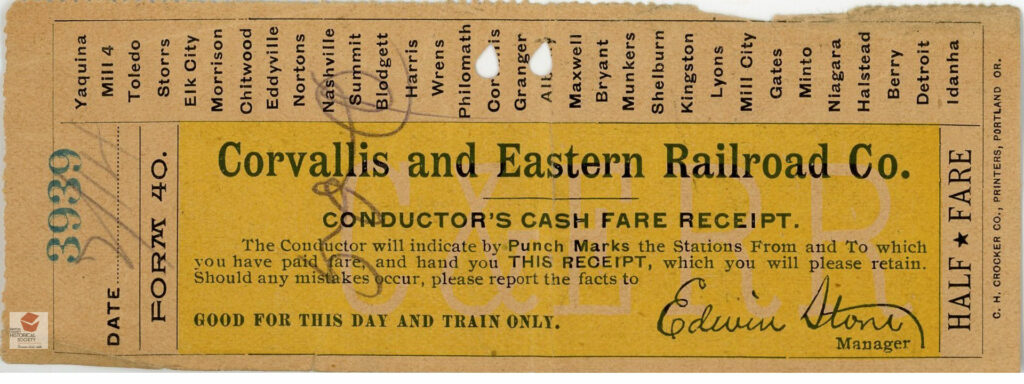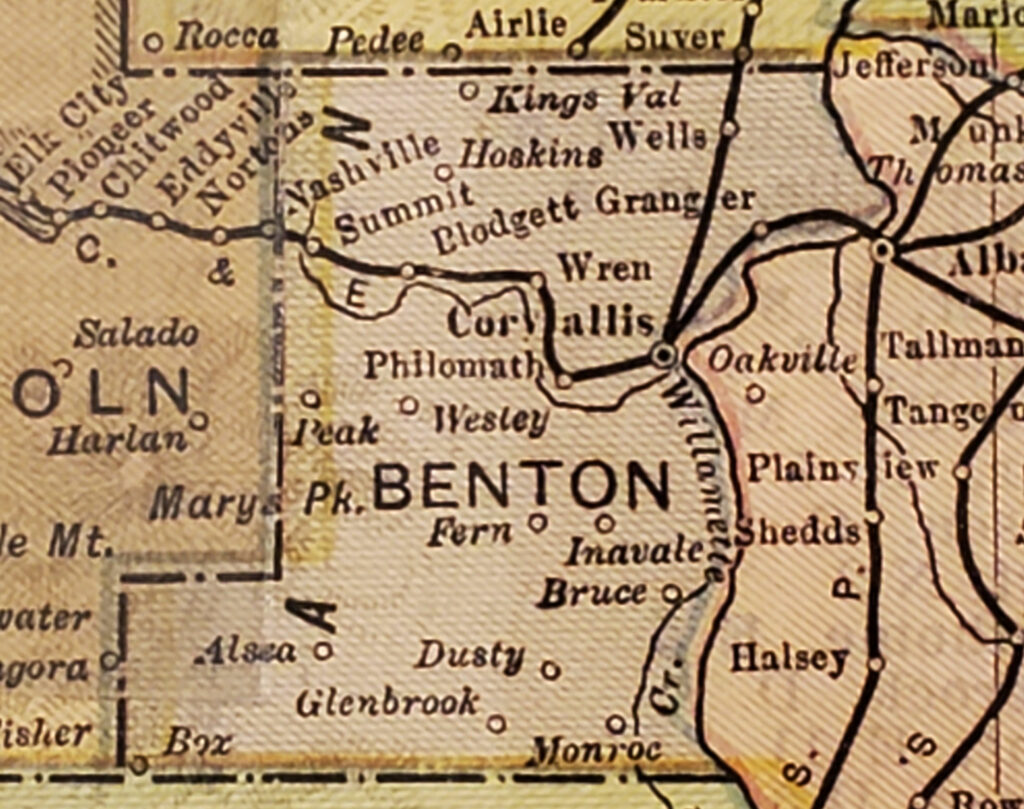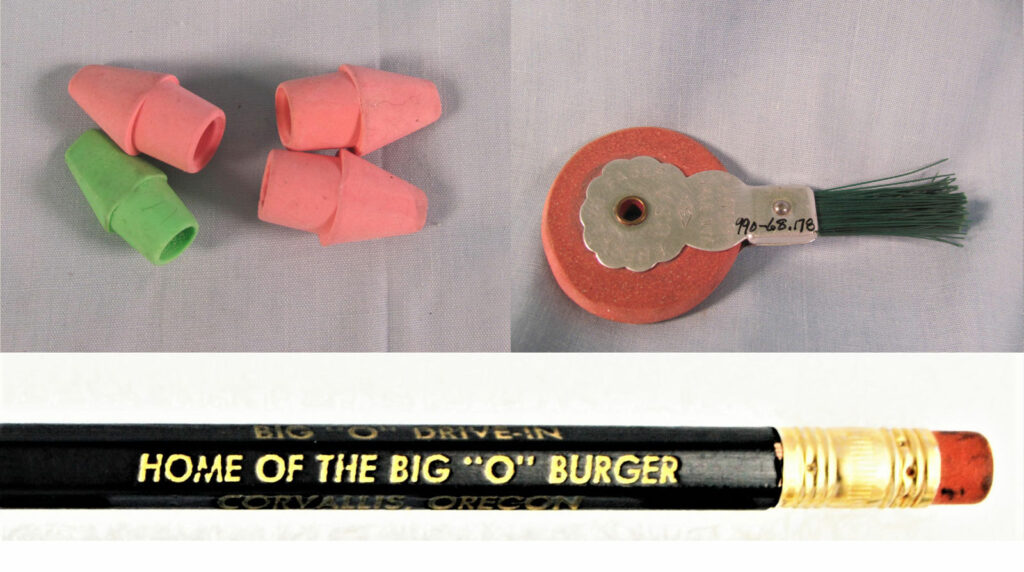There isn’t anything unusual about this fountain pen itself. Its significance comes from when and how it was used.

On March 6, 1961, Governor Mark Hatfield used this pen to sign into law the bill raising Oregon State College to university status. Hatfield then gave it to OSU president A. L. Strand who donated it to the Horner Museum. The bill reflected a recent and important change in state policy governing the institution.
Oregon State University had its origins in a small, liberal arts college founded by the community and named Corvallis College. In 1868, the state legislature designated it as Oregon’s land grant institution.
This federal program gave land to the designated institution which it could sell to fund instruction in agriculture, mechanical arts, and military tactics. The college, which had come under the control of the Methodist Episcopal Church, South, struggled financially as the land was slow to sell and the church relied on voluntary contributions and tuition. Consequently, the school was slow to add the required courses in agriculture and engineering and continued to devote most of its resources to teaching a classical liberal arts curriculum along with maintaining the primary and secondary departments. Conflicts over funding and pressure from local agricultural interests to offer more courses in agriculture led to the state taking over in 1885. In 1889, the college moved to its current location and, in 1890, was renamed Oregon Agricultural College (OAC). Additional federal programs for experiment stations and extension services provided more funds.
As a separate land grant college, the school focused on agriculture and engineering and added work in related areas such as pharmacy, forestry, mining, and home economics. It also taught courses such as mathematics, science, and English that were deemed necessary to support work in the applied fields. These were eventually grouped in the “service department.” Conflicts with the University of Oregon grew as each wanted to claim certain coursework as its own. The result was various rulings by the state Board of Higher Curricula and later the Oregon State System of Higher Education all of which maintained programs in the liberal arts and social sciences at the University of Oregon. The policy was reinforced in 1929 when the legislature passed the Oregon Unification Bill to end duplication by allocating programs for the schools. Oregon Agricultural College could continue to offer programs in the agriculture, engineering, and forestry, but was not allowed to offer upper division or graduate courses in the liberal arts. It could, however, award PhDs in the designated fields and did so beginning in 1935. Pressure from students and alumni in fields other than agriculture also resulted in a change in the name to Oregon State College (OSC).
This arrangement continued even as the number of college students rose dramatically in the years after World War II. Portland State University was created to service returning military and the regional colleges expanded to meet the demand for additional teachers to handle the baby boom leap in elementary students. By the late 1950s, Oregon State was the only one of the 7 state institutions which could not offer upper division courses and majors in the humanities and social sciences. As such, it could not really be called a university, in spite of awarding some PhDs. In 1959, OSC was finally allowed to establish a school of Humanities and Social Science and offer a general BA or BS degree in those two areas. Individual departments (English, history, economics, etc.) received the authority to grant bachelors degrees (but not graduate degrees) beginning in 1965. Some departments were approved for PhD programs beginning in the late 1980s.
With the programs expanded to include fields generally considered essential to higher education, the legislature approved a change in the name of the institution from Oregon State College to Oregon State University. The change became final after Governor Hatfield signed using this pen.



